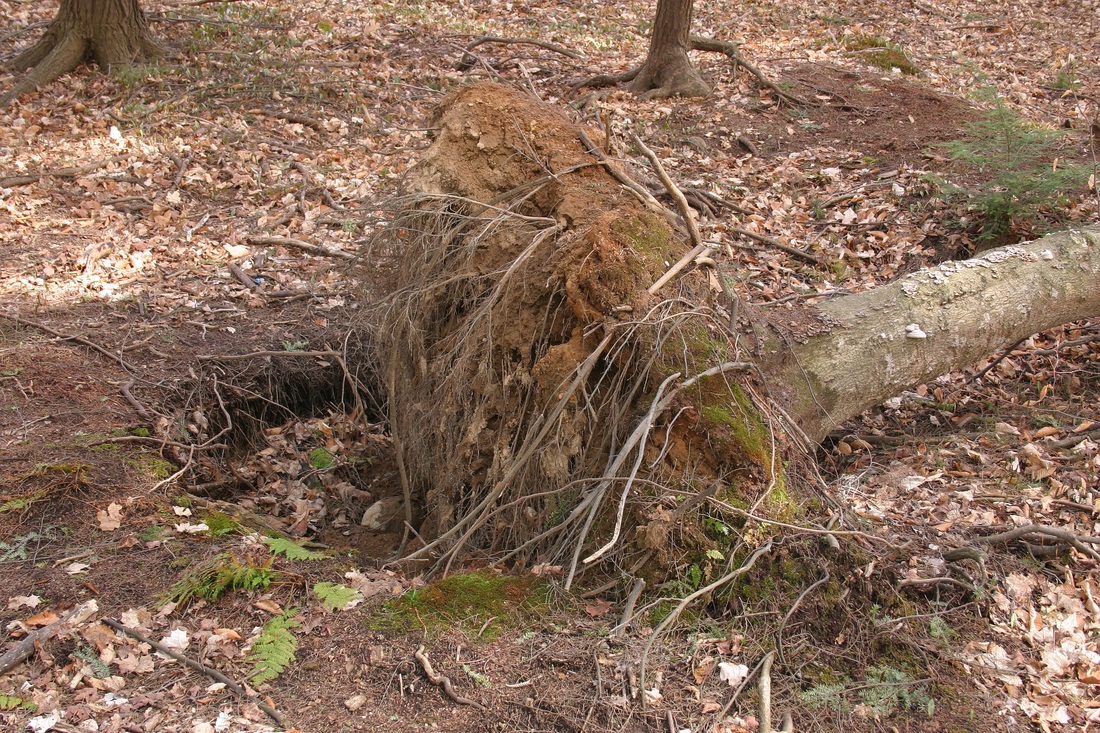|
Hummocks and hollows (pits and mounds) are micro-topographical formations found on the forest floor. These features form when a tree is uprooted. The cause of a tree to uproot is usually due to the wind, this process is known as windthrow.
The pit forms as the roots are pulled up and still hold on to the surrounding soil, thus forming a small pit. The mound forms as the roots, soil, and other organic matter decays. Over time a small mound will form besides the pit. And soon enough the tree trunk and roots decompose, leaving the fully formed pit and mound formation.These formations are often indicative of an old-growth forest. Question: Can you hypothesize how old the forest at Lacawac is based on the pits and mounds you see on the forest floor? |
Location |
|
